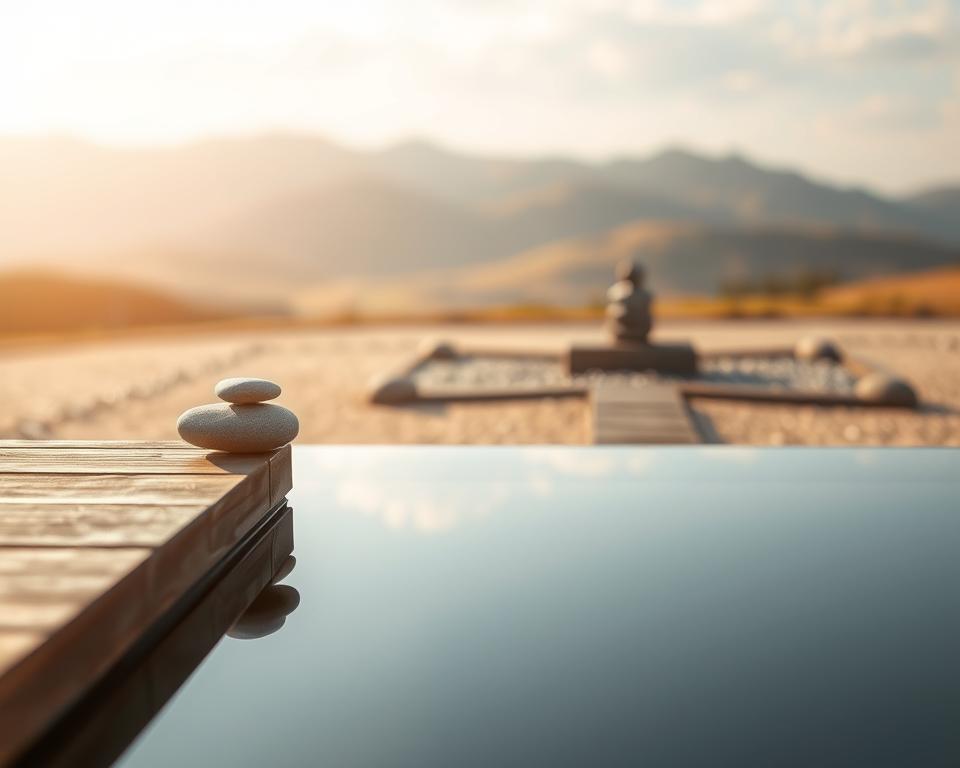Anúncios
life balance study plan starts here with a simple question: do you ever feel like your plate is too full to learn without losing sleep or time with your family?
This short guide matters now because many adults juggle a full job, classes, and family responsibilities. You will get friendly, evidence-based tips that show how to map a week, set realistic goals, and build non-negotiable study slots.
We explain practical strategies you can use at work, at school, and at home. These steps help you make sure you get enough time for core tasks without spending much time on low-value work.
Use what fits your routine, test ideas for a few weeks, and adjust based on your energy and priorities. This is an educational how-to, not a promise of results for mental health or guaranteed success.
Why Balance Matters Now: Context, Benefits, and What Research Shows
You may feel like your calendar is full but unfocused. Flexible work became common after COVID, yet many people still struggle with time management and shifting personal life demands.
Anúncios
The upside is clear: protecting sleep, short breaks, and social time supports health and can help you improve focus when you sit down for a course or a task. These are practical gains, not guarantees.
Recent research (May 2025 Journal of Management) found that flexibility helps only when you add simple planning.
“Spoiled for Choice? When Work Flexibility Improves or Impairs Work-Life Outcomes.”
Without guardrails, procrastination often erases the benefit.
Practical supports that reduce stress include an action priority matrix, quick refocus routines after interruptions, and leaving small buffers between activities. For students, enough sleep can boost recall by roughly 20–40% and regular movement helps learning.
Who this section is for
This guide helps students, working adults, and career changers who need realistic tips to get enough time for family and friends while keeping academic momentum. Use these ideas as educational guidance and consult professionals when needed.
Build Your life balance study plan: practical steps that fit your day
Start by mapping a realistic week so your available hours match what you actually do each day. List classes, work shifts, commute windows, caregiving blocks, and rest. This makes hidden slots easy to spot.
Map your real week
Write seven days in a grid. Mark fixed events first, then highlight gaps under 60 minutes that suit quick review or a Pomodoro. Use those short slots for low-effort, high-impact tasks.
Prioritize with an action priority matrix
Create four boxes: quick wins, major projects, avoid, and schedule later. Pick one quick win for each short gap and book deep work during your top time energy window.
Design a study schedule and protect health basics
Use time blocking and Pomodoro blocks with clear cut-off times. Set a stop time each evening to protect sleep; enough sleep supports memory. Prep simple meals, add short walks, and keep water nearby to improve focus.
Reduce distractions and make flexibility work
Silence notifications, clear your desk, and leave a sticky note with the next action. Add small rituals: a five-minute morning plan, a mid-day reset, and a quick evening review to keep remote or shift hours workable.

Connect, Play, and Stay Accountable without losing focus
Smart downtime and simple social supports keep your energy up and your schedule intact. Use play as a planned break so you recharge without losing much time you set aside for school or work.
Use play and digital entertainment as intentional recovery.
Use play and digital entertainment as intentional recovery, not a time sink
Set a timer before gaming or streaming and treat that slot like any other appointment. Pair play with a short break after a hard block, and stop at your cut-off to protect sleep and next-day focus.
Lean on community: study groups, cohort chats, and family schedule talks
Weekly check-ins with friends or cohort chats give encouragement without endless messaging. Host a 15-minute family schedule talk on Sunday to align meals, chores, and study windows.
Spot time-wasters, reset quickly, and keep a “done” list for momentum
Track distractions on a simple desk chart for three days to find pockets of reclaimable time. When interruptions happen, try a two-minute breathing exercise or a quick walk to improve focus before you resume.
- Keep a visible “done” list so you see progress across the day.
- Set clear boundaries around devices at night to protect sleep.
- Turn co-study hours with friends into social, productive sessions.
For light accountability methods that help you stick to these habits, try a few approachable techniques and see what works best for your schedule and goals.
Conclusion
Close with a short checklist to help you keep energy for your top tasks while managing a busy job and other duties. Use small , strategies that free up enough time and protect your schedule.
Start with one change this week — a nightly cut-off or a weekly map — and give it two weeks before you add more. Pick one ritual to guard your time energy for learning and one clear boundary to keep evenings device-light.
Review what works best monthly and adjust around your job and responsibilities. Reach out to mentors, advisors, or friends for accountability, and consult counselors or healthcare providers for mental health or medical questions.
Celebrate steady steps, keep a visible “done” list, and aim for slow, reliable progress toward success.



